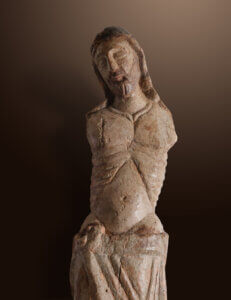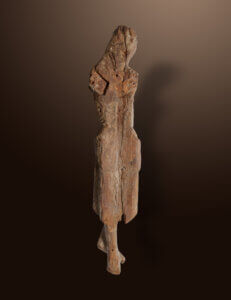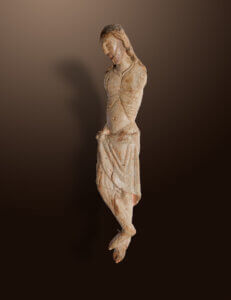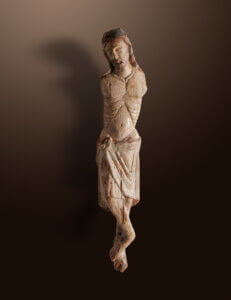Corpus Christi from Spain
The crucified man was carved around 1250 in Spain, probably in Catalonia. Frozen in a weak S-swing, Jesus hangs from the cross; his head is tilted to the side and his eyes are closed. The emaciated body reveals the ribcage beneath a thin layer of skin, as well as the dramatic V-notched abdomen. The low-lying perizonium is knotted at the side and hangs down to the knees. The feet are crossed in the three-nail type, with the stylized bent right foot expressing almost a moment of rigor mortis, underscoring Jesus’ previous ordeals.
Such Corpus Christi types were common in medieval Spain.
While until the end of the While majestically erect, triumphant depictions of the crucifixion were popular in the 12th century, a new representational convention of the resigned, introspectively dramatic Christ, whose humanity and suffering were emphasized, developed after 1200. The position of the tilted head, the V-shaped belly with strongly translucent ribs above it, the accentuated pelvic area, the long loincloth with a prominent knot at the hip, and the stylized crossed feet are clear characteristics of Spanish crucifixion depictions of the mid-Century. 13th century from Catalonia. Especially the latter feature of the superimposed feet, with the right foot angled over the left in an unnaturally rigid posture, seems to be an impressive characteristic of this type. The closest related comparative example is the Catalan Crucified from the church of Santa Maria dels Turers in Banyoles in northeastern Spain (Art Institute Chicago, 1926.120). This Christ was hung between the choir and the nave, where the congregation was; thus, it was a focal point for the faithful who witnessed this New Testament event.



